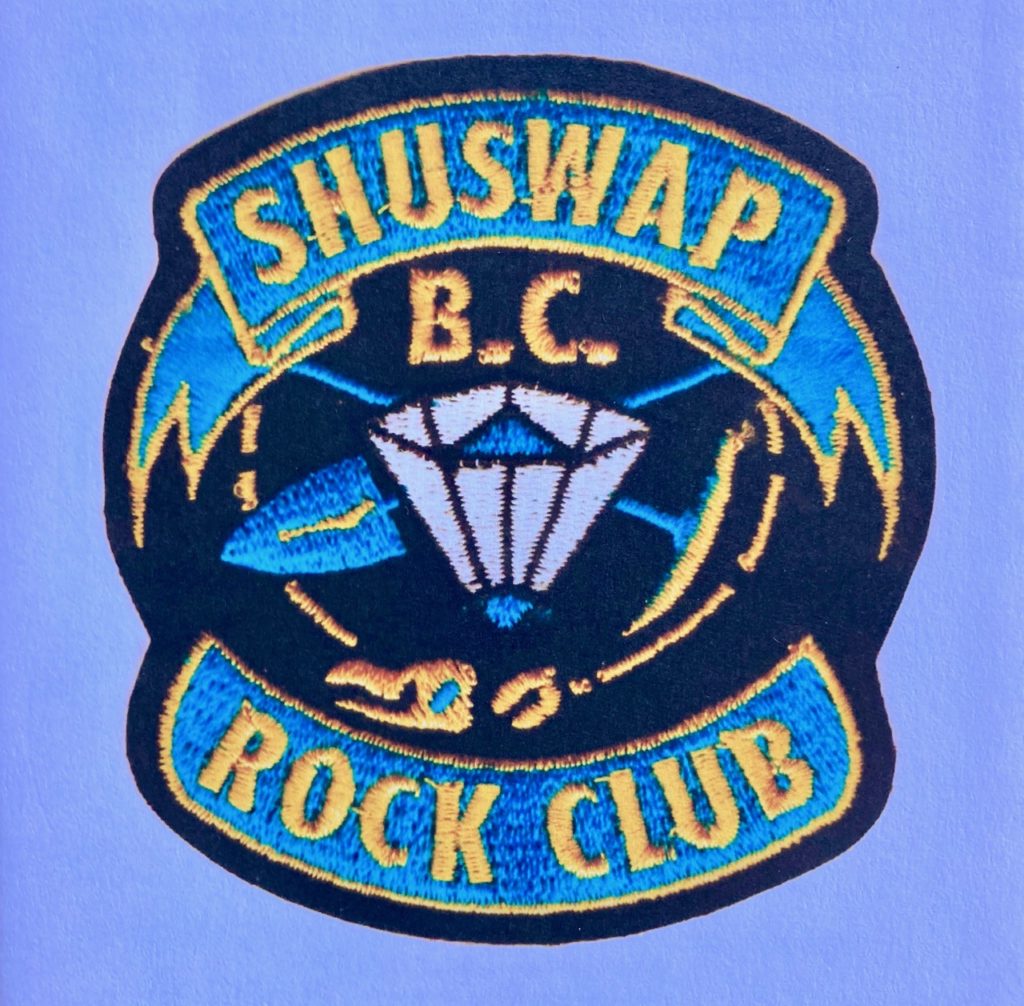
Ever since the early 1970s, there has been an active club of rockhounds in the Shuswap, who meet to share their knowledge and their finds, share a workshop for cutting and polishing rocks, hold rock and gem shows and have outings to explore for semi-precious stones. The Shuswap Rock club is also part of British Columbia Lapidary Society that includes 29 clubs and over 1,200 people who collect rocks, minerals, crystals and fossils. The society is, in turn, a member of the Gem and Mineral Federation of Canada.
During the spring and summer, club members participate in upwards of ten rockhounding field trips where they collect stones and fossils. During the winter they use their workshop for rock cutting and polishing to produce gems for jewelry and other decorative objects. At their first Sunday of the month meetings held at the Sorrento Drop-In Society building next to the Memorial Hall (at 1pm), plans are made for show and sale events, rocks are traded and there is a silent auction after the meeting.
I have always enjoyed collecting rocks and brought some of my favourite ones to the meeting in September, where one of the members was able to identify some of my collection. I traded one of the pumice rocks I found in Mexico for a sample for a polished slice of serpentine and was able to purchase a piece of petrified wood and some other polished rocks. Now as a member of the club, I am keen to participate in some of the field trips to gain more knowledge about our region’s geography and geology.

Given that most of the Shuswap geology is metamorphic, there are few areas where one can find minerals and semi-precious stones. One key area is Squilax Mountain, where the Shuswap Rock Club and other nearby clubs, often take field trips to collect agates and crystal geodes. The only access to Squilax Mountain, is through private land and fortunately, the rock clubs have an agreement with the landowners to allow them to explore the area.

Monte Lake is the other major hot spot in the Shuswap for rock collecting. For many years until he passed away, Howard Pearson operated a rock shop there that was a favourite for rockhounds and tourists looking for a souvenir. He also self-published a handmade, mimeographed book about all the nearby areas good for collectors with maps, directions and other details about the types of rocks that could be found. South of Monte Lake is a unique area filled with petrified wood, some of which contain agate.
Other areas in the Shuswap where semi-precious stones can be found include Adams Lake, the Enderby Cliffs and Mt. Ida. There was a quarry above McGillivray Lake that was actually mined during WWI to provide crystals for radios, but most of the material was removed more recently for landscaping projects.

The full list of semi-precious stones found in the Shuswap and nearby areas includes serpentine, agate, common opals, jasper, geodes, quartz crystals, fluorite and carnelian. When rock club members cut and polish their finds, they often produce cabochons or cabs, that are often polished and rounded, ellipse shaped stones with a flat reverse side. These are used for making jewelry and other decorative items. One of their former members from Chase once built a device to make polished spheres, but he sold it.

The club’s vice-president, Pat Boden, first became involved nearly 25 years ago and over that time he and his wife Gail have participated in upwards of 150 field trips to rock hounding sites from Cache Creek to Barriere and down into the Okanagan. He explained how the highlight of the year is the annual weekend Rendezvous for the B.C. Lapidary Society in May, that includes field trips, meetings, and demonstrations, plus a banquet and auction. The Shuswap Club has hosted two of these events in Chase, with attendees coming from throughout the province.
POSTSCRIPT

You can learn more about rockhounding by visiting the B.C. Lapidary Society website.








